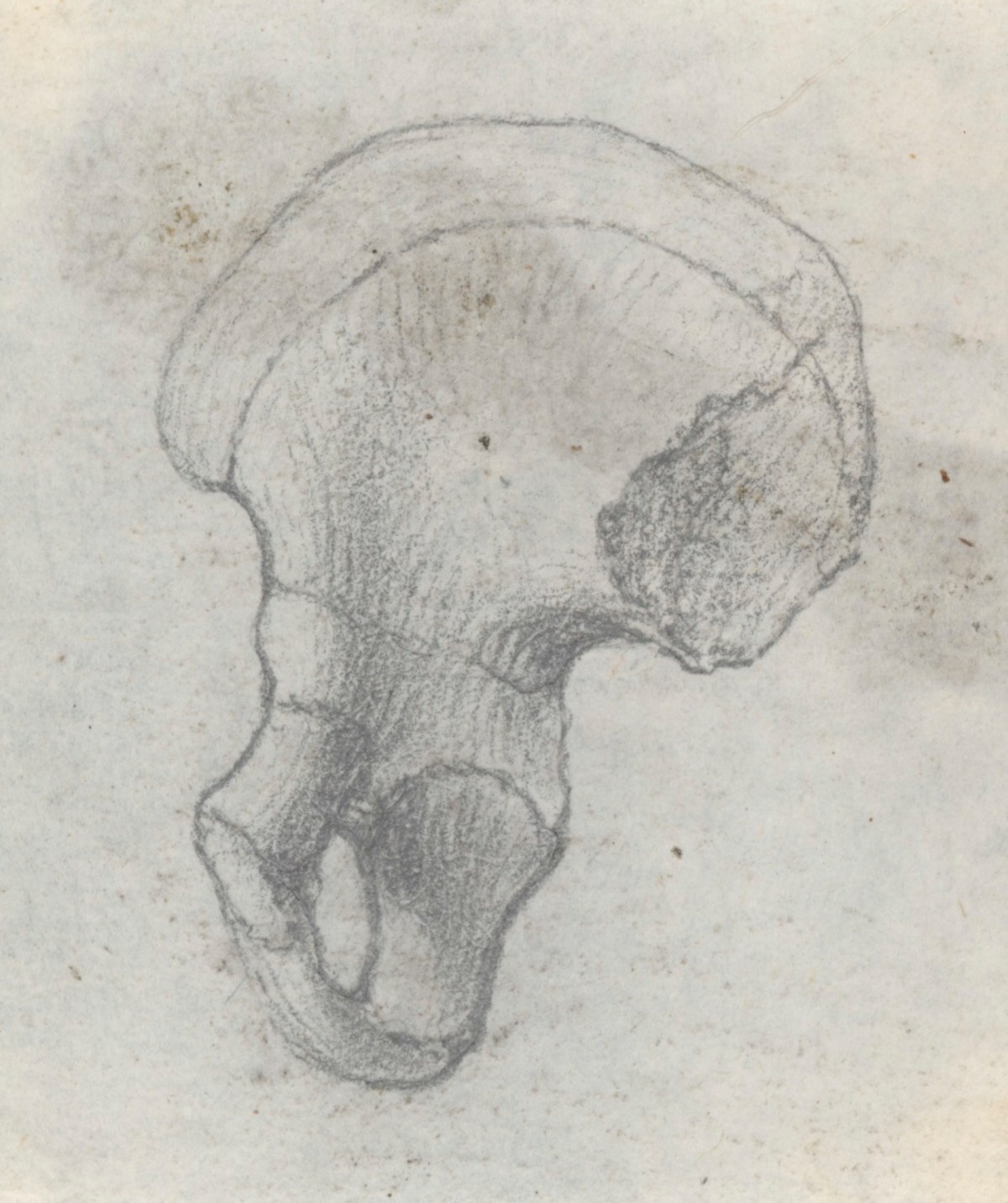
Jacob Schijnvoet, The hip bone of a fully grown foetus, for Cheselden's Osteographia, by 1733.
Pencil on cream laid paper. 66 mm x 54 mm. © Photo: Royal Academy of Arts, London.
This image is not available to download. To licence this image for commercial purposes, contact our Picture Library at picturelibrary@royalacademy.org.uk
The hip bone of a fully grown foetus, for Cheselden's Osteographia, by 1733
Jacob Schijnvoet (1685 - 1733)
RA Collection: Art
These drawings, by Gerard van der Gucht and Jacob Schijnvoet, all relate to the illustrations for William Cheselden's anatomical book Osteographia (1733).
Cheselden (1688-1752) was one of the leading surgeons of his day and held appointments at St. Thomas's Hospital and the Royal Hospital Chelsea. His circle of friends included important literary figures like Alexander Pope and Samuel Johnson as well as a number of artists. His Osteographia, a study of the human skeletal system, was one of the most comprehensive studies of its kind at that date.
The Osteographia features an illustration of every bone in the human body 'delineated as large as life'. Cheselden also describes how a camera obscura was employed for some of the drawings, pointing out that the artists were happy to use this device as it enabled them to draw in 'a few minutes' what would otherwise have taken many hours or even days. The illustration to the title page even depicts Cheselden and his assistants, Samuel Sharp and John Belchier, using the camera obscura to draw a skeleton. However, although some outlines appear to have been drawn using this device it is not entirely clear to what extent the camera was used. A few of the drawings are simple outlines apparently made using the camera. This suggests that the artists used the device at the initial stage of each drawing to ensure a precise and consistent outline for each bone but to represent texture and three-dimensionality they must have relied on their own skills of observation and draughtsmanship.
In the preface, Cheselden described Schijnvoet and van der Gucht as 'engravers' but also made clear that they were 'not less skilled in drawing that in their own proper art'. He praised van der Gucht in particular, commenting on 'the open free style in which these plates are etched and engraved, and the inimitable manner of expressing the different textures of the parts'.
Cheselden also provided information on the little-known Schijnvoet, painting a somewhat sorry picture of his life. According to him, Schijnvoet 'left Holland on account of his misfortunes. He had done in England before these some excellent works, particularly inside views of cathedral churches, which he was forced to suffer another man to set his name to, and e'er he had finished my work he died. The last thing he attempted was the skeleton of a horse, which being done in the winter in his chamber without the camera, it was so unequal to the rest that I could not use it. His manner of etching, though wonderfully neat and expressive...is nevertheless much inferior in stile [sic] to that of Mr Vandergucht'.
Significantly, Cheselden also highlighted his own involvement with the illustrations, pointing out that he chose the 'actions' and 'attitudes' in which the bones were set, adding: 'where particular parts needed to be more distinctly expressed on account of the anatomy, there I always directed;...The expressing the smoothness of the ends of the bones by engraving only with single lines, while other parts were all etched, was also my contriving'. In 1735, John Douglas, a rival surgeon, penned an attack on Cheselden's book in which he took issue with the author for crediting himself in the production of the illustrations. Interestingly, while Cheselden praised the work of van der Gucht over that of Schijnvoet, Douglas took the opposite view. He wrote that, though the frontispieces and initial letters were produced 'merely for ornament, not use', they are 'not only well contrived but well executed'.
In this group of drawings, the different styles of draughtsmanship employed by the two artists are clearly demonstrated. Schijnvoet's work is often small, delicate and detailed, while van der Gucht's drawings are larger, more robust but sometimes sketchy in style. While the group includes most of van der Gucht and Schijnvoet's drawings for the Osteographia, it does not constitute a complete set of studies for the illustrations to this publication.
Object details
66 mm x 54 mm
Start exploring the RA Collection
- Explore art works, paint-smeared palettes, scribbled letters and more...
- Artists and architects have run the RA for 250 years.
Our Collection is a record of them.



